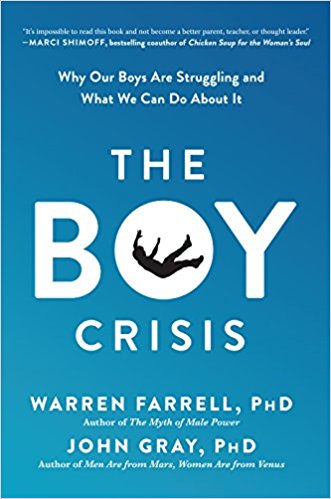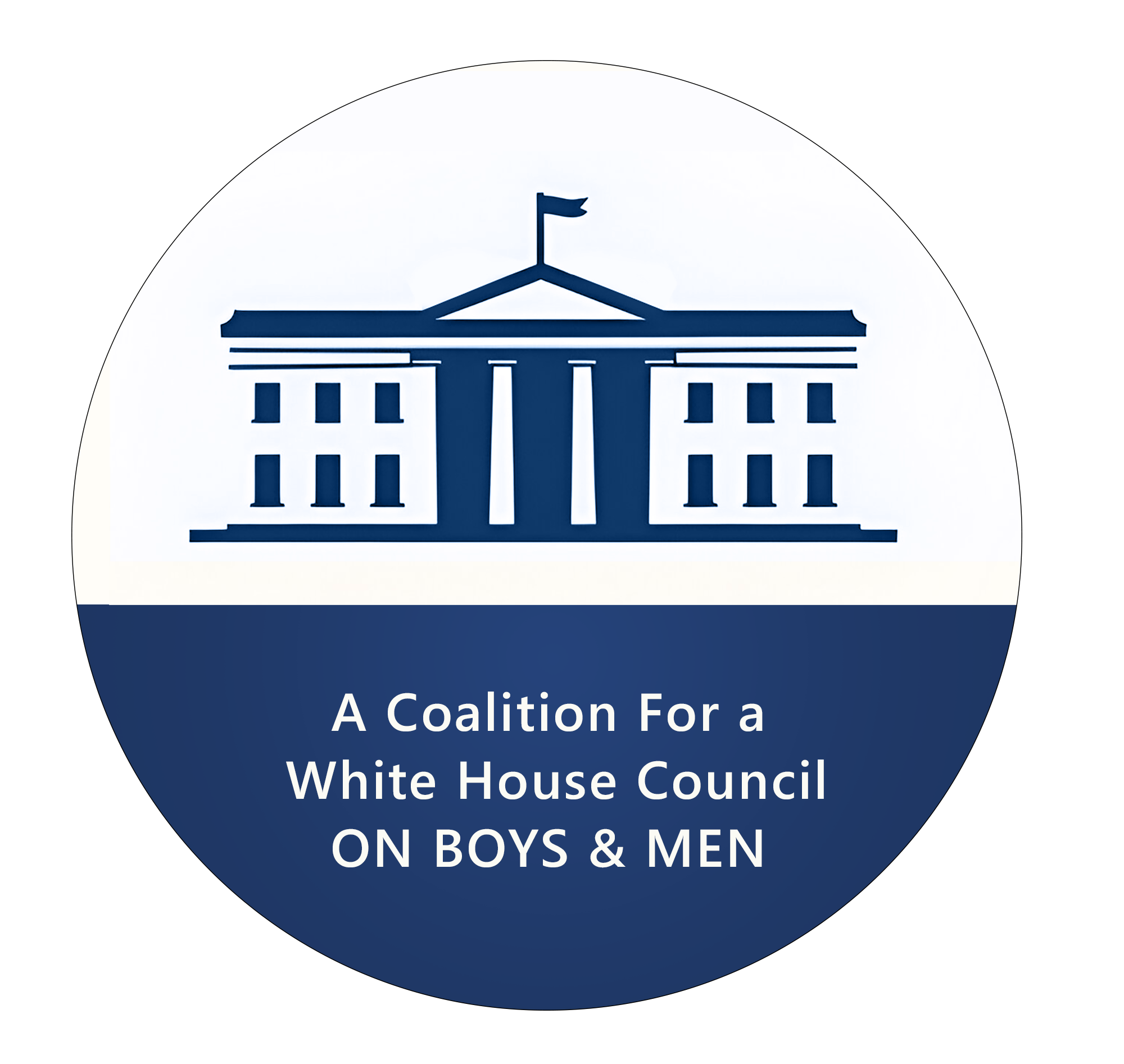
GUEST COLUMN: Boys who hurt us are also boys who are hurt
The Gazette, Colorado Springs, Guest Columnist - Warren Farrell - April 5, 2021
Two mass shootings in rapid succession have intensified the sense of insecurity in an already vulnerable American public. Yet as schools open, the insecurity will deepen if we remain unaware of how to avert the perfect storm that predicts an unprecedented increase in school shootings.

Warren Farrell
A mass shooting is more than a multiple homicide. It is also a suicide (either literally or practically). It is a boy or man hurting enough to also end his own life. That is, boys who hurt us are also boys who are hurt.
We can sense this with Atlanta shooter Robert Aaron Long, who appears to have hated himself for a sex addiction that was in fundamental conflict with a religion requiring pre-marital sex prohibition. We can say he hated Asian-American women. But in fact he desired the women, hated himself for desiring the women, and likely hated any woman who serviced his conflicted desires.
We can similarly sense the hurt and pain of the Colorado shooter, Ahmad Al Aliwi Alissa, an event that was triggered in part by being bullied by his peers for being a Muslim.
If we hope to minimize mass shootings, then, we need to minimize the pain that is causing our pain. For starters, we need to be pro-active in identifying young men who are depressed and suicidal. They are often angry at being rejected both by others and themselves. Yet instead of helping them express their anger constructively, we shame them into repressing their anger, only to be “shocked” when their volcano erupts, and bewildered as we bury our dead.
In my research for The Boy Crisis, I created a depression/suicide inventory that identifies 63 red flags of a boy in danger of suicide. The four most common denominators among mass shooters are that they are:
1. Male (almost 100%)
2. Boys who are hurt (e.g., with at least seven of the red flags)
3. Dad-deprived (about 80-90%)
4. In possession of guns (by definition)
If we are to prevent, rather than react, to these heinous crimes, we need to address all four factors:
1. (Male) and 2. (Hurt). What is happening to boys and men to create the level of pain and anger that results in a mass shooting? We ask ourselves if the shooter has mental health problems, but doesn’t anyone who commits a mass shooting have a mental health problem by definition? Our task is to identify the antecedents of the problem before it becomes even more destructive to us and him.
Awareness of the red flags would help us care for these young men before they no longer care.
The challenges of these boys and men are so absent from our cultural consciousness that the new White House Gender Policy Council’s mission statement attends exclusively to the issues of women and girls, completely ignoring the issues faced by boys and men--issues that lead to their homicides and suicide.
Identifying boys with this pain must never mean excusing their crimes, nor making them the victim. It is about helping them save both their lives and ours.
3. (Dad-deprived). About 80-90% of the mass shooters for whom we have family backgrounds are dad-deprived. Examples include: Adam Lanza (Sandy Hook); Elliott Rodgers (UCSB); Dylan Roof (Charleston); Nikolas Cruz (Parkland); Stephen Paddock (Las Vegas). Yet policy makers have completely ignored dad-deprivation as a significant etiological factor.
As schools open up, this blindness to dad-deprivation is likely to take a bigger toll. All five of the deadliest school shooters in the 21st Century for whom we have family backgrounds—100%--are dad-deprived: Seung-Hui-Cho, who killed 33 at Virginia Tech; Adam Lanza, who killed 27 at Sandy Hook; Nikolas Cruz; Chris Harper-Mercer; and Jeffrey Weise. Adam Lanza, for example, had not seen his dad for two years prior to the shooting, and lived with his mom in an extremely combative relationship.
A year of COVID-19 has created a perfect storm: COVID-related school closures have left boys, with fewer social skills, feeling more isolated than ever, and virtual learning without physical activity is more likely to aggravate their greater propensity for ADHD. As boys and young men have repressed their feelings of loneliness in this past year, they have expressed their feelings via 24,000 gun suicides, and another 20,000 deaths from gun violence—the most in decades.
Dad-deprivation is a significant predictor of suicide. And boys who transition from dad-deprived homes to male-teacher deprived schools are especially vulnerable. When boys have few male role models to help them channel their testosterone constructively, they tend to channel it destructively. Some of these boys will soon turn those guns toward the people they perceive to be mocking or ignoring them at school. Until we see their anger as vulnerability’s mask, our children in school will be vulnerable to the anger of the young men who are vulnerable.
4. (Guns). These hurt males get access to guns—often multiple high-powered guns. Australia addressed this issue, and in the process came close to eliminating mass shootings.
Preventing school shootings involves both short and long-term solutions. To minimize dad-deprivation for children of divorce, it means making the approximately equal involvement of both parents the starting assumption. For children raised by single moms, it means finding healthy male role models (e.g., vetting coaches; faith-based and scout leaders; mentors) and calling for a “Male Teacher Corps”—offering young men free tuition in exchange for a commitment to teach in school districts that are dad-deprived.
As for long term solutions, when young men are told they are needed--as in “Uncle Sam Needs You”--they are willing to die so everyone else may live. America will always need warriors willing to kill and be killed, but now we also need to prepare young men to love and be loved. We need a different type of warrior: a father warrior who receives medals of honor for exemplary parenting skills.
If we care, this is just the tip of the iceberg. If we bury our heads in the sand and hope the bullets will miss, sooner or later a hurt boy will hurt us.
Warren Farrell, Ph.D. is co-author of The Boy Crisis (with John Gray). The Financial Times chose him as one of the world’s top 100 thought leaders. He was on the Board of N.O.W. in NYC, and teaches couples’ communication courses at Esalen.
Contact
Contact WHCBM Steering Committee:
Coalition Chair: Dr. Warren Farrell - warren@warrenfarrell.com
Please Donate!
Your donations to the work of the Coalition to Create a White House Council on Boys and Men through PayPal and Network for Good are processed by our parent 501(c)(3) non-profit association, the Global Initiative for Boys and Men.
Paypal:
You can also become a Patron through Patreon.
Become a Patron!
Sign up for our newsletter, The Proposal.

A silent crisis in men’s health gets worse
Across the life span -- from infancy to the teen years, midlife and old age -- boys and men are more likely to die than girls and women
The Washington Post, April 17, 2023
A silent crisis in men’s health is shortening the life spans of fathers, husbands, brothers and sons.
For years, the conventional wisdom has been that a lack of sex-specific health research mainly hurts women and gender minorities. While those concerns are real, a closer look at longevity data tells a more complicated story.
Across the life span — from infancy to the teen years, midlife and old age — the risk of death at every age is higher for boys and men than for girls and women.
The result is a growing longevity gap between men and women. In the United States, life expectancy in 2021 was 79.1 years for women and 73.2 years for men. That 5.9-year difference is the largest gap in a quarter-century. (The data aren’t parsed to include differences among nonbinary and trans people.)
The longevity gap between men and women is a global phenomenon, although sex differences and data on the ages of greatest risk vary around the world and are influenced by cultural norms, record keeping and geopolitical factors such as war, climate change and poverty.
The Boy Crisis: Why Our Boys Are Struggling and What We Can Do About It.


WHAT IS THE BOY CRISIS?
It’s a crisis of education. Worldwide, boys are 50 percent less likely than girls to meet basic proficiency in reading, math, and science.
It’s a crisis of mental health. ADHD is on the rise. And as boys become young men, their suicide rates go from equal to girls to six times that of young women.
It’s a crisis of fathering. Boys are growing up with less-involved fathers and are more likely to drop out of school, drink, do drugs, become delinquent, and end up in prison.
It’s a crisis of purpose. Boys’ old sense of purpose—being a warrior, a leader, or a sole breadwinner—is fading. Many bright boys are experiencing a “purpose void,” feeling alienated, withdrawn, and addicted to immediate gratification.
So, what is The Boy Crisis? A comprehensive blueprint for what parents, teachers, and policymakers can do to help our sons become happier, healthier men and fathers and leaders worthy of our respect.

